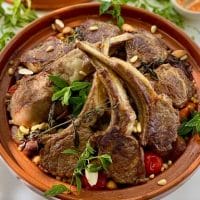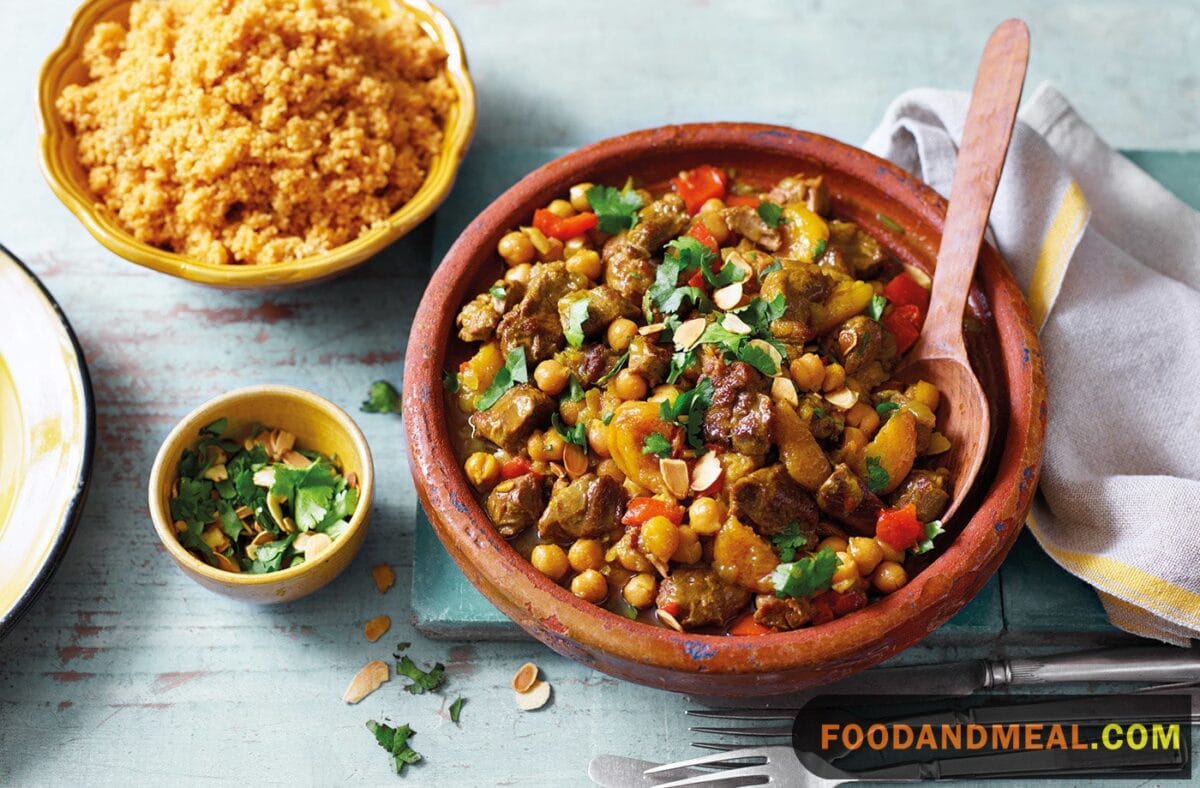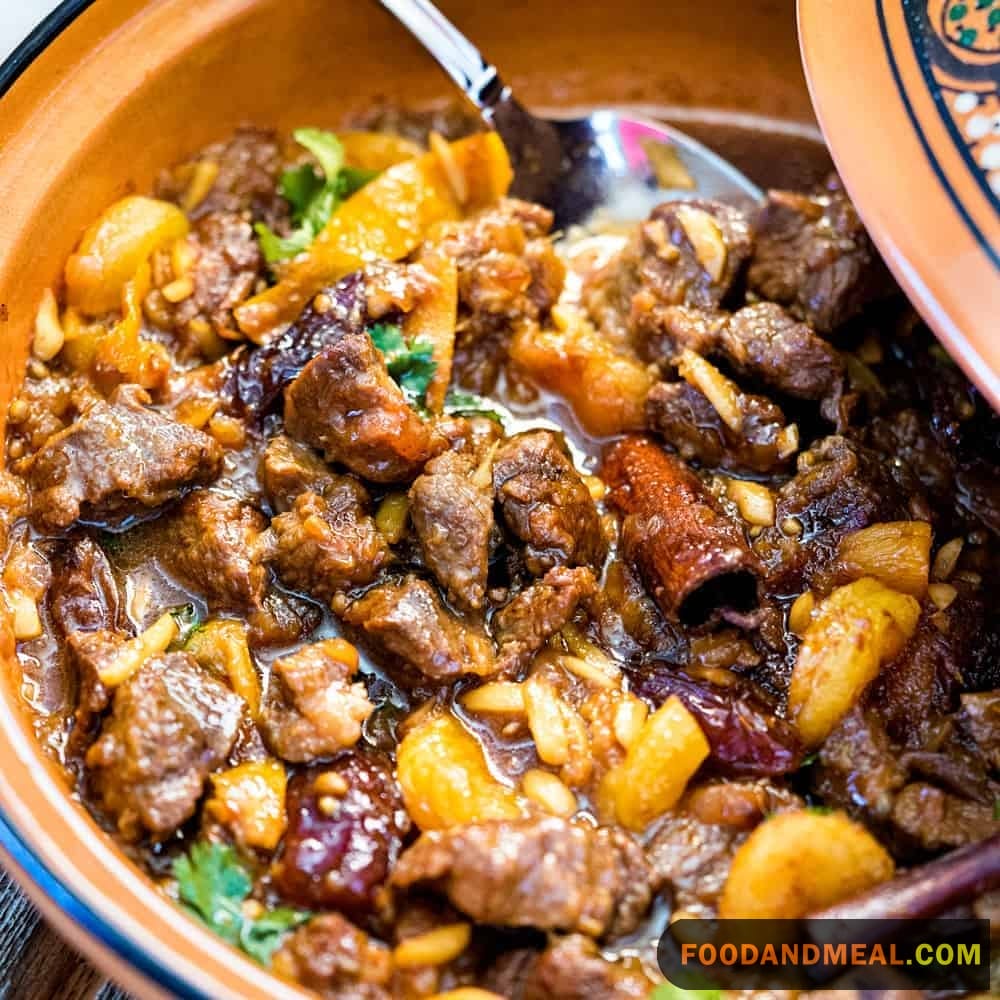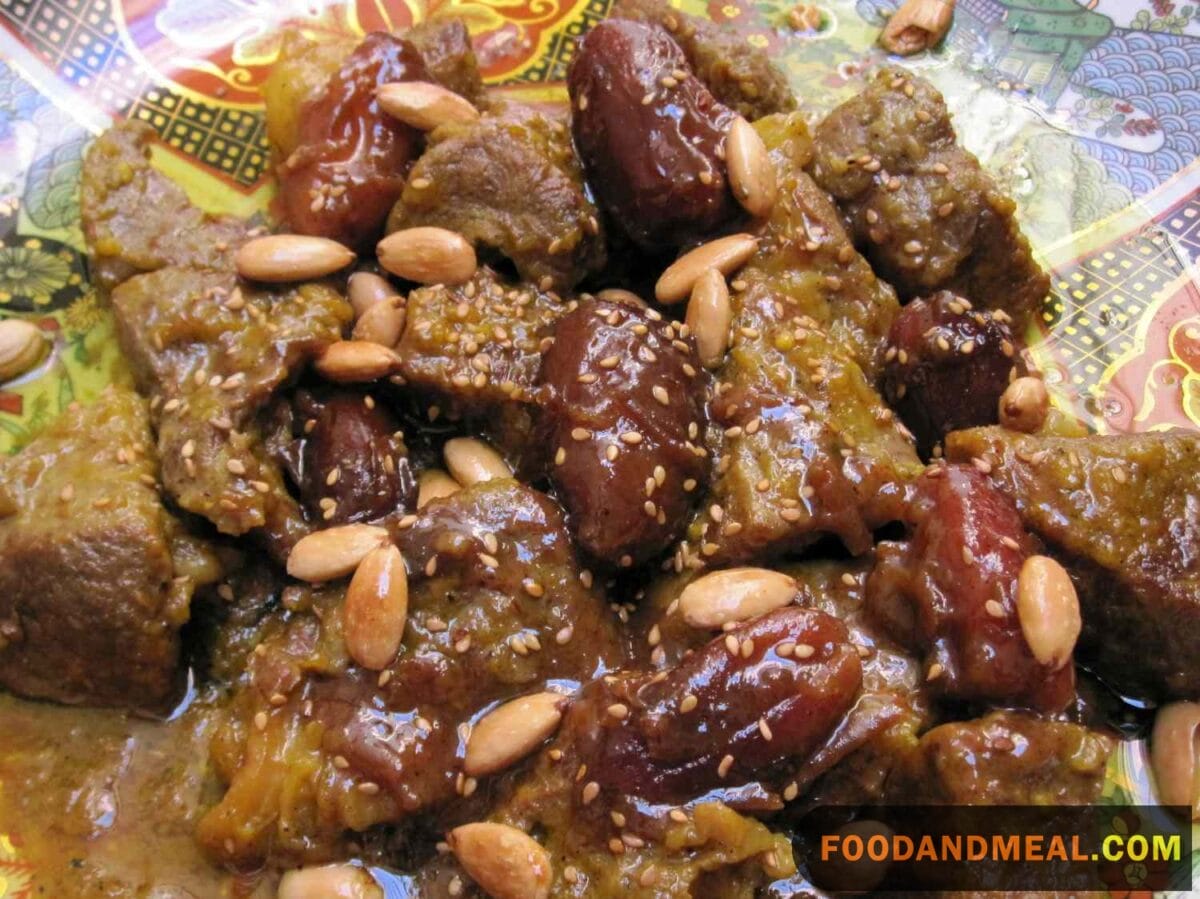Imagine stepping into a spice-scented souk, the warm Moroccan sun painting the horizon in soft shades of orange and pink, as you wind through the bustling maze of vibrant market stalls. This is the feeling I want to encapsulate as I share with you, my dear culinary enthusiasts, the rich and aromatic journey of creating a Moroccan Lamb Tagine.
As Black Pie from Food and Meal, I find myself continuously drawn to dishes that tell a story, bringing a piece of the world into our homes and onto our tables. The Moroccan Lamb Tagine is not merely a recipe; it’s an embrace of culture, a celebration of tradition, and a testament to the art of slow cooking. On a day when I feel the pull of wanderlust tugging at my soul, yet the reality of responsibilities anchoring me firmly in place, the preparation of this dish serves as my culinary escapade.
Crafting a tagine is akin to painting with flavors; every spice, a stroke of color; every simmering hour, a deepening of hues. The gentle heat coaxes out the flavors of cumin, coriander, and cinnamon, melding them tenderly with the richness of the lamb. As the stew bubbles softly within the conical clay vessel, it whispers stories of ancient trade routes and family meals spanning generations.
The reasons for my wanting to make this dish are as layered as the spices within it. Drawn to the warmth it promises on cooler evenings, the comfort it offers after a taxing day, and the connection it forges with a culture far from my own, this Lamb Tagine is more than the sum of its parts. It is my heartfelt ode to Moroccan hospitality, to the bonds formed over shared meals, and to a global heritage of epicurean delight.
Moroccan Lamb Tagine Recipe


Moroccan Lamb Tagine Recipe
Ingredients
- 2 x 400g tinned chopped tomatoes
- 1- pint tomato juice
- 2 teaspoon black pepper
- 2 teaspoon cinnamon powder
- 1 teaspoon cayenne pepper
- 2 tablespoons ginger powder
- 2 tablespoons paprika
- 3 lbs lamb shoulder dice into chunks
- 1 tablespoon turmeric
- 2 medium onions chopped
- 2 ½ tablespoons argan oil you can substitute with vegetable oil
- 2 ½ tablespoons olive oil
- 115 g dried apricots halved
- 3 cloves garlic minced or crushed
- 55 g dates halved
- 85 g flaked almonds
- 55 g raisins or sultanas
- 600 ml lamb stock
- 1 teaspoon saffron stamens soak in cold water overnight
- 1 tablespoon honey
- 2 tablespoons flat-leaf parsley chopped
- 2 tablespoons coriander chopped
Instructions
- In a small bowl, mix the black pepper, cayenne pepper, paprika, ginger, cinnamon, and turmeric. In another bowl, put the lamb and season with half of the mixed spices. Mix thoroughly, cover, and marinate for 8 hours, preferably overnight.
- Preheat the oven to 300 degrees F
- Add 1 spoonful each of the oils to a large saucepan and heat up. Toss in the grated onions along with the remaining half of the mixed spices sauté over medium heat for 10 minutes until the onions are tender but not browned. Add the minced garlic for the last 3 minutes.
- Heat the remaining oil in a skillet; fry the lamb on all sides until golden brown, then add to the onions and spices mixture. Add ¼ liter of tomato juice to the skillet, stir, and pour the juice into the meat.
- Add the rest of the tomato juice, apricots, tomatoes, dates, sultanas or raisins, almond flakes, lamb stock, saffron, and honey to the saucepan. Let it boil, then, cover with an airtight lid, put in the oven and cook for 2.5 hours or until the meat has melted slightly.
- Place the lamb in a tagine or large bowl and sprinkle over the chopped herbs.
- Serve warm
Video
Notes
- You can use lamb shanks instead of lamb shoulder, but need to ask your butcher for small lamb shanks, which are from the front legs rather than the large rear ones.
- Make-Ahead Plan: Assemble the dish and bake, then refrigerate overnight; reheat on the stove before serving
Nutrition
© Food And Meal
This website provides approximate nutrition information for convenience and as a courtesy only. Nutrition data is gathered primarily from the Spoonacular Database, whenever available, or otherwise other online calculators.
Slow Cooker Moroccan Lamb Tagine Recipe

Begin by seasoning cubed lamb with a blend of salt, black pepper, ground cumin, and ground coriander. In a generously heated skillet, infuse the air with the tantalizing scent of olive oil as you sear the lamb to a golden brown on all sides, then gracefully transfer it to the awaiting embrace of your slow cooker. In the residual skillet, orchestrate a symphony of aromas by sautéing chopped onions and garlic until they surrender their essence, then introduce ground cinnamon, paprika, and cayenne pepper for a minute-long dance of spices. This fragrant amalgamation gracefully joins the lamb in the slow cooker. As the curtains rise, add diced tomatoes, chopped dried apricots, green olives, and slivered almonds to the ensemble, coaxing a harmonious union of ingredients. Cover and set the stage for a slow-cooked symphony, allowing the lamb to tenderize over 6-8 hours until the flavors intertwine seamlessly. As the curtain falls, present your masterpiece, the Slow Cooker Moroccan Lamb Tagine, over a bed of couscous or rice.
Tips for making Moroccan Lamb Tagine

Cooking Tips
Begin by Spice it Right: Grind fresh cumin, coriander, cinnamon, and turmeric, toasting them lightly to awaken their essential oils. A generous pinch of saffron acts as the golden thread, weaving its unique flavor and aroma throughout the dish. Quality Meat Counts: Opt for a slow-cooking cut like shoulder or shank with a bit of fat, rendering down to create the rich sauce tagines are renowned for. Layer Your Flavours: Brown the lamb, sauté caramelized onions, creating a savory base for depth. Low and Slow: Patience is the virtue when simmering over low heat, coaxing flavors to meld and lamb to tender perfection. Preserved Lemons & Olives: Beyond garnishes, these are integral; preserved lemons offer tang, while olives bring salinity and meatiness. Herbs for Freshness: Sprinkle fresh coriander or parsley before serving for brightness. Resist Stirring: Layered ingredients should retain their integrity; excessive stirring risks mushy vegetables. Seal the Steam: Utilize a tagine pot or parchment paper under a regular pot lid to lock in steam and flavors. Balance the Sweet and Savory: Introduce apricots, prunes, or dates for a subtle sweet contrast, allowing them to plump during cooking.
Serving Suggestions

- For a refreshing contrast to the deep flavors of the tagine, a side of Daikon Salad could offer a crisp, cooling element. The mild, slightly sweet nature of daikon radish would provide a palate-cleansing effect alongside the spiced lamb.
- A slice of Grilled bread or Salami panini could serve as a vessel to sop up the tagine’s rich sauce, ensuring that none of its savory essence goes to waste. The addition of grilled bread would introduce a smoky note and textural variance.
- A bowl of Miso Soup could be a prelude to the meal, your palate is gently awakened with umami tones that would complement the savory notes in the lamb tagine without overwhelming your taste buds before the main course.
- If a dairy-free milk alternative is desired as a beverage or for use in dessert recipes post-meal, Almond milk offers a subtly sweet and nutty flavor that wouldn’t clash with the spices used in the tagine.
FAQs about Moroccan Lamb Tagine
- Can I store leftover Moroccan Lamb Tagine? Yes, you can store leftovers in an airtight container in the refrigerator for up to 3 days. Reheat on the stovetop for the best results.
- How do I prevent the tagine from becoming too spicy? Adjust the amount of cayenne pepper to control the spice level. You can always add more later if needed.
- Can I prepare Moroccan Lamb Tagine in advance for a special occasion? Absolutely! In fact, the flavors often improve when reheated, making it a great dish to prepare ahead of time.
- Are there vegetarian alternatives to lamb in tagine? Yes, you can create a vegetarian tagine using chickpeas, lentils, or a variety of vegetables as the main ingredients.
- What’s the secret to the perfect tagine sauce consistency? Patience is key. Allow the tagine to simmer on low heat for a longer duration to let the sauce thicken and flavors meld.
Conclusion
Crafting the conclusion for a blog post on Moroccan Lamb Tagine requires summarizing the flavorful attributes of the dish, drawing attention to its cultural significance, and highlighting the sensory experience it offers. A tagine refers to both the conical clay pot used for slow-cooking in North African cuisine and the stew-like dish that is prepared within it. Moroccan Lamb Tagine embodies a harmonious blend of spices such as cumin, coriander, cinnamon, and saffron, which are classic to Moroccan cuisine.
When bringing such a dish to the limelight on a platform like Food And Meal, or foodandmeal.com, it is paramount to contextualize the recipe’s place within the broader tapestry of Moroccan food traditions, focusing on the communal aspect of tagine dining and the cultural practice of sharing the dish from a single pot. This indulges the reader in not just the taste profile of the succulent lamb and the sweet and savory balance provided by fruits like apricots or dates, but also transports them to the social experience tied to its enjoyment.
Hello! I’m Black Pie, your culinary guide at Food And Meal, Hana Hotel Travel Company Limited. I'm passionate about unveiling the rich and diverse flavors of African cuisine to the world. Each recipe we explore is a celebration of culture, tradition, and exquisite taste. Join me on this delightful culinary journey, where we'll discover and share the hidden gems of African cooking together!



